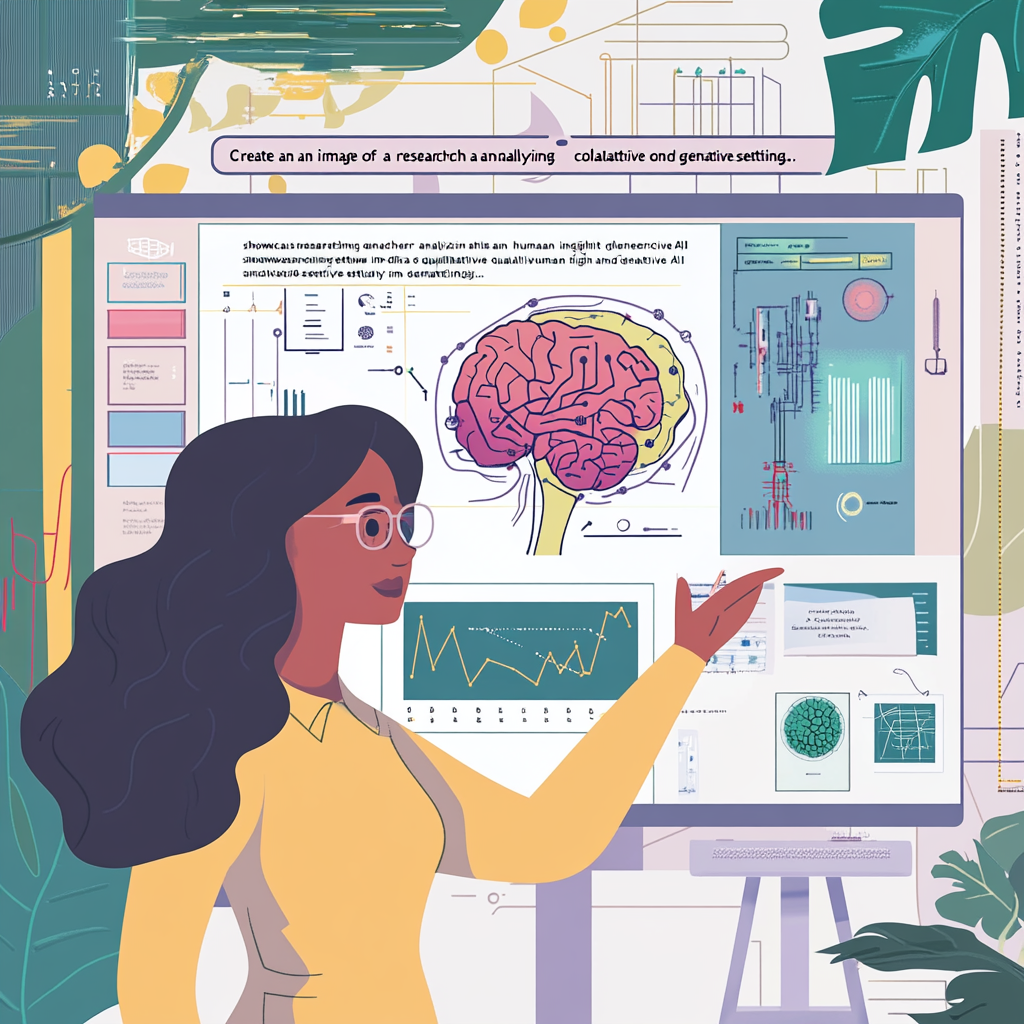
Can generative AI replace humans in qualitative research studies?
Generative AI: The New Frontier in Qualitative Research or Just Another Overhyped Gadget?
So, let’s dive right into the bubbling cauldron of qualitative research and the disruptive force that is generative AI. To be blunt, this technology doesn’t just knock at the door; it’s kicking it down, promising to revolutionize how we mine the depths of human experience. But does that mean it can completely take the place of us lovable, flawed humans in qualitative studies? Not so fast. Grab a cup of whatever fuels your intellectual fire, and let’s dissect this!
Generative AI is akin to a scribbling assistant with skills that would make even the most seasoned analysts a tad jealous. It can churn through heaps of text faster than a barista at a coffee shop during morning rush hour, summarizing and extracting themes like it’s going for a gold medal in data processing. Tools like ChatGPT and Bard are emerging as favorites among researchers, not only to automate mundane tasks but to elevate the analysis through effective coding and thematic exploration. Yes, they can punch in and generate insights, which is pretty impressive, but do they have that human touch—the punchy insights that come from lived experience? Hold that thought.
Picture this: you’ve got a mountain of data from interviews, and the question is, “What does it all mean?” This is where generative AI comes in like a well-prepared dinner guest: it helps set the table but knows it’s there to complement the main course, not replace it. The real beauty of qualitative research lies in the nuanced interpretations, the subtle undercurrents of human emotion that AI struggles to catch. It’s like trying to paint a sunset with just a can of gray paint; sure, you might achieve some depth, but you’ll miss the vivid oranges and purples that make it unforgettable.
Now let’s talk about the elephant in the room: limitations. Generative AI, despite its shiny interface and flashy capabilities, lacks the cognitive empathy and subjective understanding that humans inherently possess. It’s kind of like having a friend who can never really get your quirks but can regurgitate everything you’ve ever said—neat, but ultimately shallow. Complex human emotions and perspectives often fly over the heads of AI tools, which have been trained on vast datasets but have never experienced a heartbreak or a moment of epiphany.
Research has shown that while AI can mimic human behavior to some extent, it can’t replicate the depth that comes from personal experience. A study by researchers at Carnegie Mellon University underscores this point beautifully—while generative AI might assist, it simply cannot substitute the richness and intricacies of human insight. This isn’t just a whimsical suggestion; it’s a stark reminder that for every line of code written, there’s a range of human experiences that simply cannot be distilled into data points.
What might the future hold? Imagine a world where generative AI becomes a trusted collaborator in qualitative research. The union of human creativity and AI efficiency could unlock a treasure trove of insights. Picture researchers rolling up their sleeves to analyze the deeper implications of data, while AI does the heavy lifting of sifting through catalogs of participant responses, identifying patterns worth moments of contemplation.
You might ask, “Will AI replace me as I dive into the world of qualitative research?” Well, let’s be clear, the future looks more like a partnership than a hostile takeover. The integration is real, yet necessitates an ethical compass, especially regarding research integrity, security, and authorship. With great power comes great responsibility, and as we fumble forward into this new digital landscape, the commitment to methodological rigor and ethical conundrums must stay firmly in our sights; it’s a non-negotiable.
So here we are, standing at the crossroads of human insight and artificial efficiency. Generative AI has the potential to be a game changer in qualitative research, enhancing productivity while freeing up precious time for researchers to delve into the emotions and contexts behind their data. It can illuminate pathways previously obscured by human biases and limitations.
However, the essence of qualitative research—the delicate dance of human interpretation—remains firmly in the hands of researchers. The AI may help chart the course, but we’re the ones who must navigate through the thick and thin of human experience. So, whenever you find yourself wrestling with a mountain of qualitative data, remember to invite this technological companion to your research party. Just don’t forget who’s leading the dance.
As we stride boldly into this new age of AI-assisted inquiry, keep yourself informed and engaged with the latest developments. Want to stay up to date with the latest news on neural networks and automation? Subscribe to our Telegram channel: @channel_neirotoken.

